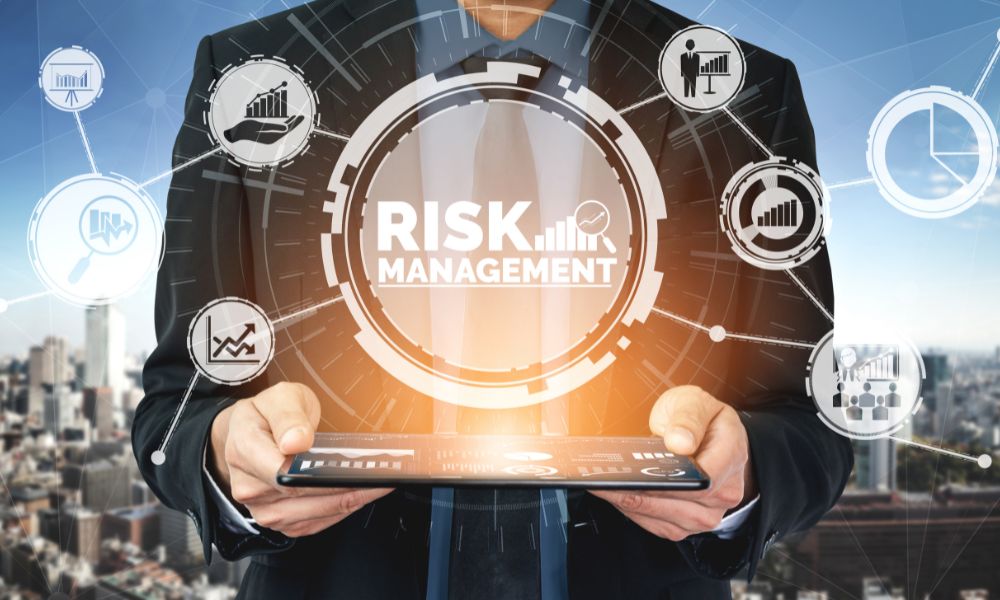Welcome to vulnerability management, where proactive strategies are crucial in safeguarding digital assets against potential threats. Identifying vulnerabilities is the initial step in this comprehensive approach.
Vulnerability scanners, such as those utilised by security teams, systematically probe computer systems for known weaknesses—ranging from open ports to insecure configurations—that malicious actors could exploit.
Moreover, leveraging public sources like the National Vulnerability Database (NVD) or vendor-specific security updates enhances detection. However, the landscape also includes unknown vulnerabilities, such as zero-day exploits, necessitating advanced techniques like fuzz testing.
This method employs targeted test cases to uncover obscure weaknesses like buffer overflows. Automated testing further streamlines the analysis, ensuring comprehensive coverage and rapid response.
What is vulnerability management?

Vulnerability management in cyber security involves continuously identifying, prioritising, and addressing security weaknesses within an organisation’s IT infrastructure and software. These weaknesses, known as security vulnerabilities, can be exploited by hackers to compromise systems, steal data, or disrupt operations.
Given the complexity and constant evolution of today’s enterprise networks, relying solely on manual methods for vulnerability management is impractical. Therefore, organisations employ vulnerability management tools and software to automate and streamline this crucial task. The vulnerability management process begins with the discovery of vulnerabilities across networked assets.
Once identified, these vulnerabilities are prioritised based on their potential impact and likelihood of exploitation. Vulnerability management services, including specialised tools for scanning and analysis, then come into play.
These services effectively assess, report, and mitigate risks, leveraging automated scans and assessments to enable IT security teams and policies to stay ahead of potential threats and proactively secure their systems.
However, vulnerability management is not a one-time task but a continuous cycle. After vulnerabilities are addressed, the process begins with ongoing monitoring and periodic reassessment.
This approach ensures that new vulnerabilities are promptly identified and remediated, maintaining a robust security posture. Integration with business management software services further enhances the efficiency and effectiveness of vulnerability management across the organisation’s operations and security frameworks.
The vulnerability management process

Managing vulnerabilities is crucial to safeguarding systems and data. Due to the ever-evolving nature of threats, the vulnerability management process involves a continuous lifecycle. This process integrates several vulnerability management tools and software to identify, assess, prioritise, mitigate, and monitor vulnerabilities.
Organisations rely on vulnerability management services to streamline these workflows effectively. By implementing this systematic approach, businesses can proactively address security weaknesses and minimise risks. Ultimately, vulnerability management in cybersecurity is essential for maintaining a robust defence against potential cyber security.
1. Discovery Process
The discovery process in vulnerability management involves conducting thorough assessments of an organisation’s IT assets to uncover potential weaknesses and security gaps. Typically, this workflow is facilitated through specialised tools known as vulnerability scanners.
These scanners automate the scanning of networks and endpoints, either through periodic comprehensive scans or by utilising agents installed directly on devices. Additionally, episodic assessments such as penetration testing complement automated scans by identifying vulnerabilities that may evade automated detection.
For organisations looking to enhance their security posture, engaging with a business growth consultancy can further optimise these processes, integrating vulnerability management into broader strategic initiatives.
2. Categorisation and Prioritisation
Following the discovery phase, vulnerabilities are categorised based on their types, ranging from device misconfigurations to encryption issues and exposure of sensitive data. Once categorised, vulnerabilities are then prioritised according to their criticality levels.
This crucial step assesses the severity of each vulnerability, its potential for exploitation, and the likelihood of an actual cyber attack. To aid in this process, vulnerability management services, including business intelligence services, leverage industry-standard threat intelligence sources like the Common Vulnerability Scoring System.
CVSS assigns severity scores on a scale of 0 to 10, offering a standardised approach to assessing vulnerability criticality. Sources such as MITRE’s Common Vulnerabilities and Exposures (CVEs) and NIST’s National Vulnerability Database (NVD) provide further insights into known vulnerabilities.
3. Resolution in Vulnerability Management
Resolution in vulnerability management refers to the comprehensive process of addressing security weaknesses identified within an organisation’s systems or networks. This involves implementing remediation, mitigation, or acceptance strategies to manage these vulnerabilities and effectively reduce the risk of exploitation.
4. Remediation
The first approach, remediation, entails fully addressing a vulnerability so that it can no longer be exploited. This often involves actions like installing patches to fix software bugs or retiring vulnerable assets from active use.
Modern vulnerability management tools facilitate this process through features such as automated patch management and centralised configuration control, ensuring vulnerabilities are promptly and effectively resolved.
5. Mitigation
Mitigation, conversely, involves making vulnerabilities more challenging to exploit and reducing the potential impact of exploitation. For instance, isolating a vulnerable device from the main network segment while awaiting a patch exemplifies mitigation efforts.
This strategy is crucial when immediate remediation isn’t feasible or practical. In vulnerability management services, mitigation strategies are vital in maintaining operational continuity while minimising risk exposure.
6. Acceptance
Acceptance is the strategic decision not to immediately address a vulnerability, typically due to its low criticality or minimal likelihood of exploitation causing significant harm. This approach allows organisations to prioritise resources and focus on more pressing security concerns.
7. Reassessment after Resolution
Once vulnerabilities have been addressed through remediation or mitigation, conducting reassessment is essential. This process involves performing another vulnerability assessment round to verify the applied measures’ effectiveness.
Security teams use vulnerability management software to conduct these reassessments, ensuring that no new vulnerabilities have been introduced and the initial vulnerabilities have been effectively mitigated.
8. Reporting Capabilities in Vulnerability Management
Reporting is a crucial aspect of the vulnerability management process. It involves using specialised platforms that provide comprehensive dashboards and metrics.
These tools enable security teams to track key indicators such as mean time to detect and mean time to respond, which are critical for evaluating the efficiency and responsiveness of vulnerability management efforts.
Additionally, these platforms maintain databases of identified vulnerabilities, facilitating audits and providing insights into historical vulnerability management activities. Reports generated from these platforms serve multiple purposes.
They help security teams establish a baseline for ongoing vulnerability management and facilitate communication with other IT teams responsible for asset management and project management services. Organisations can ensure that all stakeholders are informed and aligned on current vulnerabilities and mitigation strategies by sharing information through detailed reports.
What is risk-based vulnerability management?
Risk-based vulnerability management (RBVM) is an innovative approach to handling vulnerabilities within an organisation’s cybersecurity framework. It integrates stakeholder-specific vulnerability data using advanced artificial intelligence and machine learning.
This method enhances vulnerability management services by prioritising risks effectively. Vulnerability management tools and software are utilised to analyse and mitigate potential threats, ensuring a proactive vulnerability management process.
1. More Context for More Effective Prioritisation in Vulnerability Management
Traditional vulnerability management tools rely heavily on industry-standard metrics such as CVSS or NIST NVD to assess the criticality of vulnerabilities. These metrics provide a general overview but often need to account for individual organisations’ specific contexts and environments.
This limitation can lead to either overestimating or underestimating a vulnerability’s impact on a particular company. In contrast, modern approaches like Risk-Based Vulnerability Management (RBVM) offer a more nuanced solution.
RBVM tools can prioritise vulnerabilities based on their actual risk to the organisation by integrating stakeholder-specific data and real-time insights. This method considers the severity of a vulnerability and evaluates factors such as the asset’s criticality and its exposure to potential threats.
2. Real-Time Discovery Expanding Coverage
Traditional vulnerability management processes rely on scheduled scans, which may miss new or transient assets. In contrast, RBVM solutions enable continuous monitoring and real-time vulnerability scans.
This approach extends coverage beyond traditional network devices, including on-premises and remote assets, cloud resources, third-party applications, and mobile devices. By employing RBVM tools, organisations can promptly detect vulnerabilities across diverse environments.
This proactive stance ensures that potential security gaps are identified and addressed, reducing the window of opportunity for malicious actors.
3. Automated Reassessment for Timely Action
In traditional vulnerability management, reassessment often requires manual intervention through periodic network scans or penetration tests. Conversely, RBVM streamlines this process with automated reassessment capabilities.
Continuous monitoring and scanning allow for immediate updates on the status of vulnerabilities, enabling organisations to respond swiftly to new threats or changes in their IT landscape. RBVM software’s automation features enhance operational efficiency and bolster security by providing up-to-date vulnerability assessments.
This automation reduces the reliance on manual efforts, allowing security teams and policies to focus on strategic initiatives rather than routine tasks.
Vulnerability management and attack surface management

Vulnerability management services encompass the continuous process of evaluating, prioritising, and mitigating security vulnerabilities in an organisation’s IT infrastructure.
Vulnerability management tools are crucial in scanning networks, systems, and applications to detect weaknesses that malicious actors could exploit. This proactive approach is vital in vulnerability management in cyber security, as it helps organisations avoid potential threats.
On the other hand, attack surface management (ASM) goes beyond traditional vulnerability management. It involves the comprehensive discovery, analysis, and remediation of vulnerabilities across all potential attack vectors, including physical and social engineering aspects.
ASM solutions identify known vulnerabilities and uncover unknown and third-party assets that could pose risks to the network. This broader scope makes ASM integral to modern vulnerability management software solutions.
Conclusion
In conclusion, vulnerability management is not merely a reactive measure but a proactive strategy essential for maintaining robust cybersecurity. By continuously identifying, prioritising, and mitigating vulnerabilities within IT infrastructures, organisations can effectively reduce their exposure to potential threats.
Automated tools and risk-based approaches enhance the efficiency and accuracy of this process, ensuring timely responses to emerging security risks. Moreover, integrating vulnerability management with broader strategies like attack surface management provides a comprehensive defence against known and unknown threats across diverse attack vectors.
This holistic approach safeguards sensitive data and critical systems and strengthens overall resilience against evolving cyber threats.
























